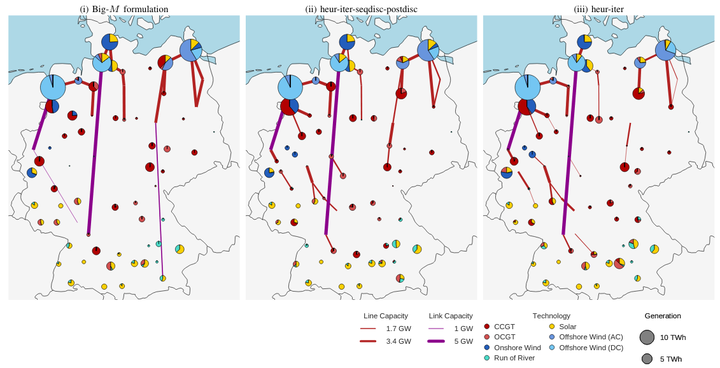Heuristics for Transmission Expansion Planning in Low-Carbon Energy System Models

Governments across the world are planning to increase the share of renewables in their energy systems. The siting of new wind and solar power plants requires close coordination with grid planning, and hence co-optimization of investment in generation and transmission expansion in spatially and temporally resolved models is an indispensable but complex problem. Particularly considerations of transmission expansion planning (TEP) add to the problem’s complexity.
Even if the power flow equations are linearized, the optimization problem is still bilinear and mixed-integer due to the dependence of line expansion on line impedance and a discrete set of line expansion options. While it is possible to linearize this mixed-integer nonlinear program (MINLP) by applying a big-M disjunctive relaxation, the resulting MILP is still hard to solve using state-of-the-art solvers for large-scale energy system models.
In this paper we therefore develop heuristics to incorporate integer transmission expansion and responsive line impedances in energy system models, while retaining the lower computational effort of continuous linear programming (LP) by applying sequential linear programming (SLP) techniques, relaxation and discretization approaches. We benchmark their performance against the results of the exact formulation for a policy-relevant case study of the German transmission system in terms of their speed-up in computation time, deviation from optimal total system cost, and similarity of line expansion.
Using heuristics we reduce computation times of joint generation and transmission optimisation by 82% with a maximal total system cost deviation of only 1.5%. The heuristics closely mirror optimal integer line investment of the exact MINLP with considerable time savings for policy-relevant low-carbon energy system optimization models.